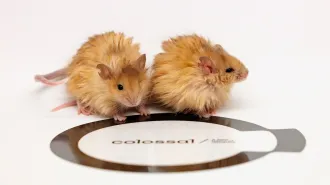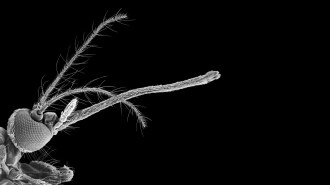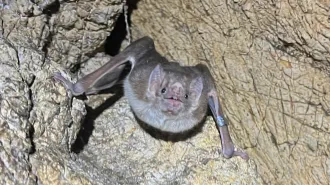Call the gender police. Girl mice act like frisky boys when a chemical-sniffing organ crucial for courting behavior is disabled.
The altered females chased cage mates of both sexes, persistently sniffing their rear ends, mounting them, and emitting high-frequency cries typical of mating males. “The females behave exactly like the males,” says Catherine Dulac of the Howard Hughes Medical Institute and Harvard University.
Dulac prompted the gender bending by disabling a key gene in the vomeronasal organ, also called Jacobson’s organ. This slice of tissue sits deep in the nasal cavity, where it senses the chemical messengers called pheromones when they’re released by other mice.
The unexpected behavioral switch occurred in female mice engineered to lack a gene called Trpc2. Surprisingly, the researchers found that surgically disabling the vomeronasal organ caused genetically normal adult females to exhibit the same suite of randy behaviors.
The findings suggest that adult female mice possess a “perfectly functional male-behavior circuit,” Dulac says.
The females, which subsequently all became pregnant during their sexually voracious encounters, neglected child-care duties, eventually abandoning their offspring.
The researchers caution that their findings do not extend to people. People lack the vomeronasal organ, relying instead on visual and behavioral cues to distinguish boys from girls.
The findings were reported online Aug. 5 in Nature.






